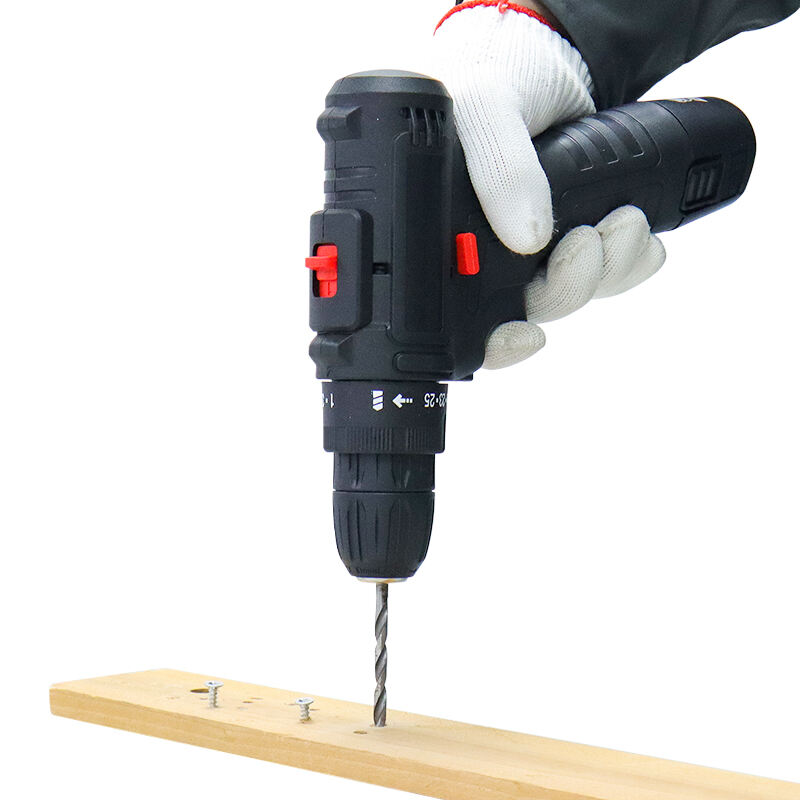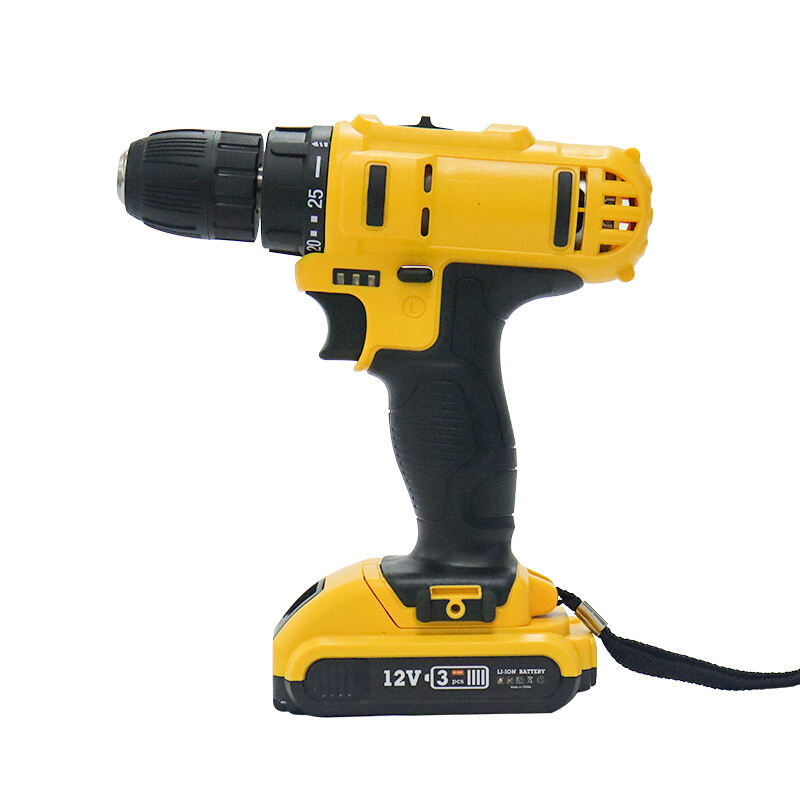Mastering Safe Power Tool Operation for Home Projects
Working with an electric drill opens up endless possibilities for DIY projects, from hanging shelves to assembling furniture. However, this versatile power tool demands proper respect and handling to ensure both successful results and personal safety. Understanding the fundamentals of electric drill operation and safety protocols not only protects you but also enhances the quality of your work.
Whether you're a seasoned DIY enthusiast or just starting your journey into home improvements, knowing how to properly handle an electric drill is crucial. This comprehensive guide will walk you through essential safety measures, proper techniques, and expert tips to make your drilling projects both safe and successful.
Understanding Your Electric Drill
Components and Features
Modern electric drills come equipped with various features designed for both functionality and safety. The main components include the chuck (which holds the drill bit), the trigger switch, speed control settings, and the direction selector. Many models also feature a clutch setting that helps prevent overdriving screws and damaging materials. Understanding these components is crucial for safe operation.
Most electric drills offer variable speed control, allowing you to adjust the rotation speed based on your project needs. Lower speeds are ideal for driving screws, while higher speeds work better for drilling holes. Some models also include hammer drill functionality for masonry work, though this requires additional safety considerations.
Power Sources and Specifications
Electric drills come in both corded and cordless varieties, each with its own safety considerations. Corded models provide consistent power but require careful management of the power cord to prevent tripping hazards. Cordless drills offer greater mobility but need regular battery maintenance and proper charging procedures to ensure safe operation.
Understanding voltage ratings is essential - higher voltage typically means more power, but also requires more careful handling. For most home projects, a 12V to 18V electric drill provides sufficient power while remaining manageable for the average user.

Essential Safety Equipment
Personal Protective Gear
Before operating an electric drill, ensuring you have the right protective equipment is crucial. Safety glasses or goggles are non-negotiable, as they protect your eyes from flying debris and dust. Work gloves provide better grip and protect your hands, though they should fit well enough to maintain dexterity while operating the drill.
Hearing protection becomes important when working on longer projects or with more powerful drills. Additionally, dust masks are recommended when drilling materials that produce fine particles, such as drywall or wood.
Workspace Safety Equipment
Your workspace should be equipped with proper lighting to ensure clear visibility. A stable work surface or appropriate clamps to secure materials is essential. Keep a first aid kit nearby, and consider having a fire extinguisher rated for electrical fires within reach.
Organization tools like drill bit holders and power cord management systems help maintain a safer workspace by preventing trips and keeping accessories properly stored when not in use.
Proper Operating Techniques
Drill Bit Selection and Installation
Choosing the right drill bit for your project is crucial for both safety and success. Using the wrong type or size of bit can lead to accidents or damage to materials. Always ensure the bit is properly secured in the chuck and test it for wobble before starting work. Replace worn or damaged bits immediately.
When changing bits, always disconnect the power source or remove the battery from your electric drill. This eliminates any chance of accidental activation during bit changes. Keep bits clean and sharp - dull bits require more pressure, which can lead to loss of control.
Drilling Technique Fundamentals
Maintain a stable stance with both feet firmly planted when operating your electric drill. Hold the tool with both hands when possible, using the auxiliary handle for better control on more powerful models. Start holes at low speed and gradually increase as needed, letting the drill do the work without excessive pressure.
When drilling deep holes, periodically back the bit out to clear debris and prevent binding. If the drill binds, release the trigger immediately and safely remove the bit from the material. Never use your hands to stop a spinning chuck or bit.
Maintenance and Storage
Regular Maintenance Procedures
Keep your electric drill in top condition through regular maintenance. Clean the ventilation slots after each use to prevent overheating. Check cords for damage or wear, and inspect the chuck for proper operation. Lubricate moving parts according to the manufacturer's recommendations.
For cordless models, proper battery care is essential. Store batteries at room temperature and avoid completely discharging them. Replace batteries showing signs of damage or significant capacity loss.
Safe Storage Practices
Store your electric drill in a dry, secure location away from children and extreme temperatures. Use the original case or a dedicated toolbox to protect the drill and its accessories. Keep batteries charged but not connected to the tool during storage.
Organize accessories and bits in clearly labeled containers to prevent confusion and ensure you can quickly find the right components for each project. This organization also helps prevent damage to bits and accessories.
Frequently Asked Questions
How often should I replace my electric drill bits?
Replace drill bits when they show signs of wear such as dulling, chipping, or rust. For frequent users, inspect bits monthly and expect to replace commonly used sizes every 6-12 months. Professional-grade bits typically last longer than basic ones.
Can I use my electric drill in wet conditions?
It's not recommended to use an electric drill in wet conditions or rain. Moisture can damage the tool's electrical components and create serious safety hazards. If you must work in damp areas, use a properly rated cordless drill and take extra precautions to keep the tool and work area dry.
What should I do if my electric drill overheats?
If your drill becomes hot, stop using it immediately and allow it to cool completely. Check the ventilation slots for blockages and clean them if necessary. When drilling demanding materials, take regular breaks to prevent overheating. If overheating persists, have the tool professionally inspected.

